Editor's note:
The 2025 high school graduation exam marks an important milestone in the implementation of the 2018 general education program . The Ministry of Education and Training has three goals for this exam: to evaluate learners' learning outcomes according to the goals and standards of the new program; to use exam results to consider recognizing high school graduation and to serve as one of the bases for evaluating the quality of teaching and learning of general education institutions and the direction of education management agencies; to provide reliable data for universities and vocational education institutions to use in enrollment in the spirit of autonomy.
On that basis, the Ministry has made strong and drastic innovations in both the exams and university admission regulations to aim for real learning and real testing, reduce exam pressure, promote the teaching and learning process according to the abilities and interests of each individual, while ensuring fairness and transparency.
However, as these ambitious policies were put into practice, a series of challenges arose.
From English exams with difficulty exceeding the standard, the uneven test matrix of subjects, the difference in scores between groups, to the complicated rules for converting equivalent scores... All of these unintentionally create "privileges" for a group of candidates and widen the gap with candidates in rural and remote areas.
With the series of articles "High school graduation exam and university entrance exam 2025: The maze of innovation and concerns about fairness", we not only look back at the problems that have occurred but also dig deep to find the core causes, thereby proposing solutions and making practical recommendations so that the high school graduation exam and university entrance exam in 2026 and the following years will truly be a fair and transparent competition for each learner and each training institution, while at the same time positively impacting innovation in teaching and learning at the high school level.
More than a decade of streamlining the examination system
The high school graduation exam with dual goals began to be implemented in 2015 according to Decision 3538 issued in September 2014 by the Ministry of Education and Training approving the plan to innovate the high school graduation exam and university and college admissions.
The exam is designed to streamline the examination system, such as reducing exam pressure for candidates and reducing the number of exams; saving costs, time and resources for both candidates and exam organizers; and creating favorable conditions for universities and colleges in enrollment.
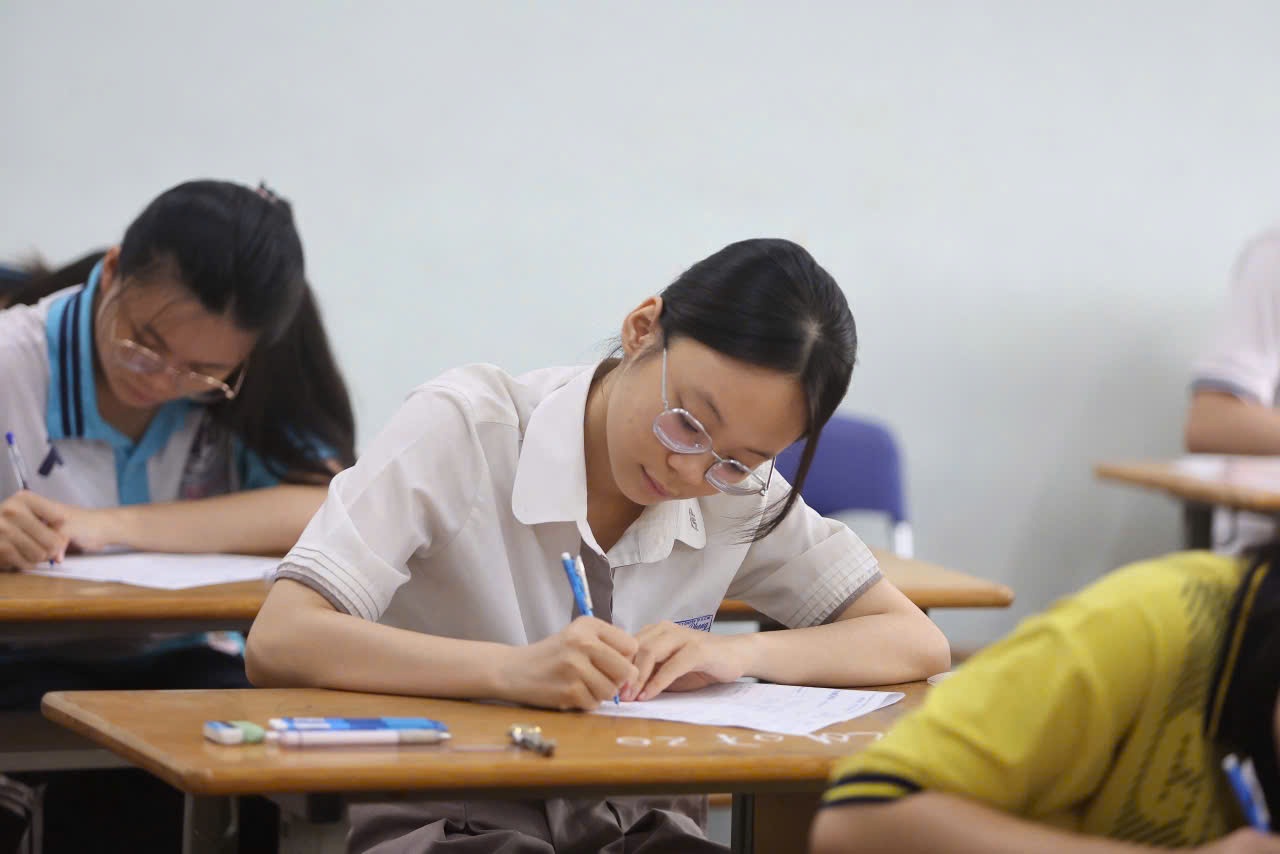
The current high school graduation exam still has two goals: to consider graduation and to be able to obtain admission results for universities and colleges (Photo: Trinh Nguyen).

Candidates in the 2025 high school graduation exam (Photo: Hai Long).
Initially, the exam was called “National High School Exam” with a clear “2 in 1” nature, both for graduation and as a basis for university and college admission. By 2020, the exam was renamed “High School Graduation Exam”.
Changing the name to high school graduation exam reduces the goal of obtaining admission results but the nature does not change. The results are used to consider high school graduation and universities and colleges can use them for admission in the spirit of autonomy.
One of the "dark spots" in this exam was the "earthquake" of exam cheating with 347 exam papers having their scores manipulated discovered in Ha Giang , Son La, and Hoa Binh (the names of the provinces before the merger).
At that time, reporting the results of this exam, the National Assembly's Committee on Culture, Education, Youth, Adolescents and Children (now the Committee on Culture and Society) pointed out that implementing a common exam with two goals of both assessing high school graduation and serving as a basis for university and college admissions was a difficult task.
Difficulties in the construction of exam questions, conditions of facilities, equipment, and technology serving the exam in many localities; difficulties in coordination in organizing inspection, checking, and supervision in localities... become "loopholes" for cheating.
During the 11 years of implementation, the high school graduation exam has also undergone many changes in terms of subjects and time. Notably, 2025 is the first year that 12th graders will take the high school graduation exam according to the 2018 General Education Program.
In this exam, candidates only take 4 subjects including 2 compulsory subjects: math and literature, and 2 elective subjects. Candidates only take the exam in 3 sessions.
Explosion of private exams, exam pressure… recurs
With dual goals, the high school graduation exam is expected to reduce exam pressure and review for candidates when both graduating and getting university admission results.
But in reality, for many years now, using only the high school graduation exam results is not enough for many universities in admission, especially the top universities. The exam is designed with the goal of making graduation difficult so that excellent students can demonstrate their thinking, ability, and difference.

Besides the "two common" graduation exam, candidates run after a series of separate exams and foreign language certificates to increase their chances of getting into university (Photo: Thanh Dong).
The exam has "uniformized" the students' test results, which means that it is difficult for schools to choose "a sharp sword among a forest of swords". There have been years when there has been a "rain" of 10s and a paradox, in which a candidate who scored 10 points per subject still failed to pass the entrance exam (including priority points).
In 2018 and this year 2025, the graduation exam in some subjects was very difficult. Especially this year, English and math were considered too much for students. The score distribution of these two subjects was "surprisingly" beautiful, but experts pointed out that it was only beautiful on paper.
The score distribution shows that the exam has good differentiation, suitable for selection in admission but not suitable for the nature of the graduation exam to confirm that students have completed the general education program. It can be seen that these two goals in an exam called high school graduation are more or less contradictory and clashing. Meeting one goal will "skew" the other and vice versa.
Along with the period of high school graduation exams with the goal of "2 in 1" is also the period of explosion of a series of separate exams from capacity assessment, to thinking assessment to specialized assessment, V-SAT university entrance assessment exam... of many universities.
Some specific exams include the Hanoi National University's capacity assessment, the Ho Chi Minh City National University's capacity assessment; the Hanoi University of Science and Technology's thinking assessment, the Hanoi Pedagogical University's capacity assessment, the Ho Chi Minh City Pedagogical University's specialized capacity assessment, etc. Most of these exams are organized by units many times a year, attracting tens of thousands to hundreds of thousands of candidates to participate.
The largest individual exam currently belongs to the Ho Chi Minh City National University's competency assessment exam. From just over 4,500 candidates in the first year of organization (2018), by 2025, this exam attracted nearly 153,000 candidates with nearly 223,200 registrations. From internal admissions within Ho Chi Minh City National University, up to now, more than 110 educational institutions have used scores from this exam for admission consideration.

Ho Chi Minh City National University's aptitude test, the largest private exam in the country (Photo: Hoai Nam).
Not to mention, there are a series of separate university admission methods offered by universities such as considering foreign language certificates such as IELTS, SAT, TSA...
Along with the “2 in 1” exam, hundreds of thousands of candidates and their families are busy preparing for the exam, taking extra classes, and investing money in separate exams and foreign language certificates for the race to enter university. Along with that are the psychological and financial burdens of students and parents.
Having taken the Ho Chi Minh City National University’s aptitude test twice in 2025, candidate NHL, from Vinh Long, said he wanted to enroll in the information technology major at some member schools of Ho Chi Minh City National University. These schools all prioritize recruiting candidates based on university aptitude test scores, so L. took the test to increase his chances of getting into university. L. had to practice and travel many times to take the test…
Besides the graduation exam with the “dual” target of universities, there are hundreds of thousands of candidates struggling with their own exams. To be honest, the goal of reducing exam pressure for candidates, reducing the number of exams, and saving costs of the high school graduation exam “paves the way” for other pressures.
Exam and the question "keep or drop"?
On August 13, at the National Assembly Standing Committee's session to comment on the draft Law on Amendments and Supplements to a Number of Articles of the Education Law, the issue of "to abolish or not to abolish the high school graduation exam" was also raised.
According to Chairman of the Committee for Culture and Society Nguyen Dac Vinh, there are two different opinions on this matter within the standing committee of the review agency.
The first opinion suggests that the high school graduation exam should still be held because it is necessary to assess the level of general education standards of students, provide national data for research, development, and adjustment of education policies, and serve as a source of reference information for universities and vocational training institutions to organize enrollment.

"Keeping or abolishing" the high school graduation exam has been a question for many years (Photo: Trinh Nguyen).
According to this group of opinions, the high school graduation exam also has the meaning of granting a high school graduation certificate or a certificate of completion of the general education program for the purpose of connecting and integrating into the international education system.
The second opinion is to propose not to organize exams but to consider high school graduation to suit the goals and nature of this level of education. This option reduces pressure and costs due to exams. As for secondary school, college and university admissions, they should be assigned to higher education and vocational education institutions to organize admissions.
Whether to keep or abolish the high school graduation exam has been a question that has been raised for many years. An exam facing the question of “keep or abolish” has shown the hesitation and wavering about the value it brings.
According to Associate Professor Dr. Vu Duy Hai, Head of Admissions and Career Guidance Department, Hanoi University of Science and Technology, the "2 in 1" exam, which is used for both graduation and university and college admissions, will certainly have a certain "skew" and will be difficult to implement.
With the high school graduation rate of most provinces and cities being over 90% for many years, according to Mr. Hai, should the Departments of Education and Training consider graduation as many countries in the world are doing, while the Ministry of Education and Training organizes a national exam to consider university and college admission?
Associate Professor Hai said that the provinces and cities have merged, and the Department of Education and Training all have stature, so assigning graduation assessment to localities is not too heavy.
According to Mr. Vu Duy Hai, many countries such as Korea, China or Japan are maintaining a national exam to serve the university admission work. Therefore, the Ministry of Education and Training needs to maintain this exam only for the purpose of university admission.
“However, if there is only one exam, there will be a risk of “putting all your eggs in one basket”. Therefore, in my opinion, in addition to the Ministry’s exam, qualified schools can maintain their own exam to increase opportunities for candidates,” Associate Professor Dr. Vu Duy Hai expressed.
Speaking to the press previously, Dr. Nguyen Hoang Chuong, former principal of a high school in Lam Dong, also raised the question: "Is it too costly and complicated for us to spend billions of dong just to eliminate two or three weak students from each school? Should we return this exam to its proper place?"
From another perspective, there is an opinion that, in 12 years of general education, we only have one graduation exam, which is the exam at the end of grade 12, to evaluate the quality of education at the entire high school level, to use as a scale to measure the level of learning between localities. Therefore, if there is any loophole, it must be patched first.
Teacher Vu Khac Ngoc (Hanoi) shared that the goal of the high school graduation exam is not to eliminate but to evaluate the level of program standards of candidates. If we want the graduation rate to be 60-70%, it will be easy because we can raise the requirements to a more difficult level. But is it necessary to do so and what is the purpose of doing so?
According to Mr. Ngoc, imagine we have a phone or car production line, although the product defect rate is very small, no manufacturer skips the step of checking and evaluating product quality. The meaning of the high school graduation exam is the same.

The high school graduation exam is considered "weak" in evaluating students for university admission (Photo: Thanh Dong).
This teacher said that we currently do not have graduation exams at the end of primary and secondary school. The final exam for grade 9 is called the entrance exam for grade 10, not the graduation exam.
Therefore, the final exam of grade 12 is the last and almost only national exam to evaluate the quality of general education. If this exam is also removed, this teacher is afraid that there will be no tool left to evaluate the quality of general education.
One path for one exam, two goals
During the discussion on the draft Law on Amendments and Supplements to a Number of Articles of the Law on Education, which was consulted by the National Assembly Standing Committee, in response to the opinions on the high school graduation exam, Vice Chairman of the National Assembly Nguyen Khac Dinh supported the plan to continue organizing the high school graduation exam. However, he did not agree with the proposal to study the separation of the high school graduation exam from university admissions.
The Vice Chairman of the National Assembly stated that currently, the general exam is the general exam, and the university admission is autonomously managed by the schools. Universities using graduation results for admission is the school's business, not mandatory. Some schools still have separate exams, some schools have additional aptitude exams, so using the word "separate" is incorrect.
Mr. Dinh said that if the regulation is separated, when universities want to use high school graduation exam results for re-enrollment, they will not be able to, and will have to organize a new exam, which could be more costly for society.

To ensure two goals in an exam requires synchronization between the program - teaching - testing - data - technology (Photo: Hoai Nam).
If the "dual" goal of the high school graduation exam is still maintained, both to recognize graduation and to serve as a basis for university admission, according to Dr. Hoang Ngoc Vinh, former Director of the Department of Vocational Education, Ministry of Education and Training, what needs to be done is to redesign the exam in the direction of stratifying goals and multi-layered tools.
First of all, the assessment for graduation must ensure that students meet the minimum competency standards according to the general education program, aiming at universalizing high school education. This part needs to be done seriously but not too heavily classified.
The section used for university admissions should have a highly differentiated component or test designed to focus on thinking and academic abilities.
Based on the results of that common exam, universities can diversify additional screening methods, such as analyzing academic records, learning activity records, and interviews similar to many international models to select the right students suitable for specific professions.

Dr. Hoang Ngoc Vinh (Photo: NVCC).
The most important thing, according to Dr. Hoang Ngoc Vinh, is that this entire mechanism must be placed in a synchronous system between the program - teaching - testing - data - technology. If the exam is innovated but the operating system cannot keep up, it will cause a counter-reaction, injustice and chaos.
In other words, one exam, two goals is only possible when the whole system is redesigned as a closed loop: with feedback, with stratification, with flexibility without creating additional social burden. And to do that, the prerequisite is to build a professional, competent and appropriately invested examination team.
Dr. Hoang Ngoc Vinh informed that in countries like Germany and France, the high school graduation exam (Abitur and Baccalauréat) is also the basis for university admission, designed with dual goals from the beginning and is national.
Meanwhile, China and South Korea hold completely independent university entrance exams, while high school graduation is mainly based on process assessment and minimum requirements.
Unlike the above models, the US and Canada do not have a unified national exam for high school graduation or university admission. Instead, graduation is based on the accumulation of credits and GPA at school. University admission depends on the overall application, including SAT/ACT scores (in the US), transcripts, personal essays, letters of recommendation and extracurricular activities. The UK has a similar system, with A-Level exams playing an important role in university admission.
Although the methods are different, Dr. Hoang Ngoc Vinh said that the common point in these countries is that they have built a synchronous educational and testing ecosystem with a clear curriculum, a team of professional teachers, a standardized question bank, transparent learning data and strong support technology.
As a result, testing functions as a precise link in the quality assurance chain, rather than serving as a substitute for systemic shortcomings.
Source: https://dantri.com.vn/giao-duc/thi-tot-nghiep-thpt-voi-muc-tieu-kep-nhin-thang-cau-hoi-giu-hay-bo-20250816204444815.htm













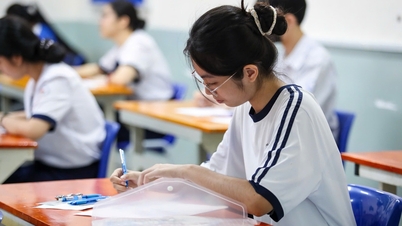

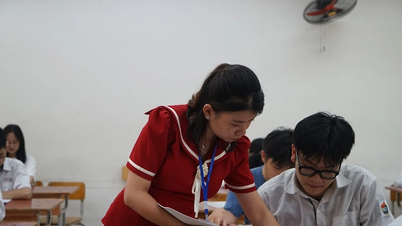






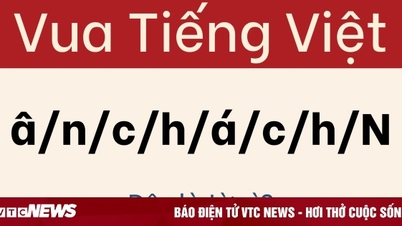


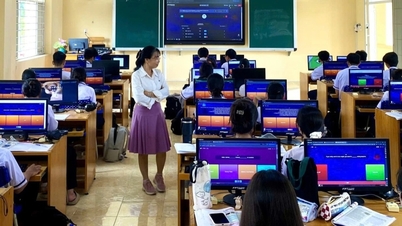















































































Comment (0)